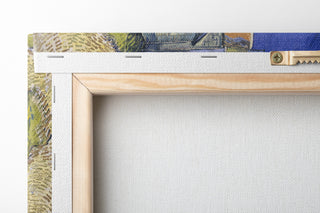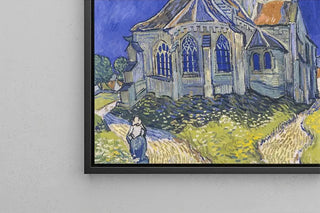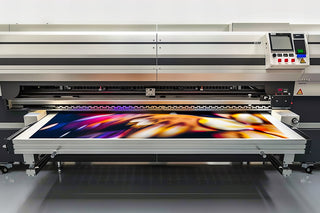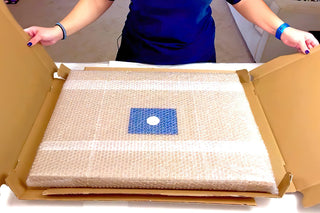Art print of a boy sitting in a cellar attracting a puppy - P. C. Skovgaard


View from behind

Frame (optional)
A cozy and luminous moment: the intimate art of P. C. Skovgaard
In this warm scene, a boy sitting in a cellar attracts a puppy, revealing a subtle composition where light caresses the textures of stone and fabric, while simple gestures tell a story of complicity. The palette favors earthy tones and golden touches that highlight the softness of the moment, and the pictorial touch combines precision of details with a subdued atmosphere. The balance between the human subject and the animal creates an immediate emotion, giving this art print of a boy sitting in a cellar attracting a puppy a familiar and soothing presence in any interior.
P. C. Skovgaard, master of Danish landscape romanticism
Peter Christian Skovgaard is part of the Danish golden age of the 19th century, where the observation of nature and national sensitivity shaped art. Influenced by his contemporaries and the Copenhagen school, he excelled at representing rural life and landscapes with great chromatic accuracy and attention to detail. His major works testify to a documentary concern combined with visual poetry: farm scenes, paths, and modest interiors take on an emotional strength that has marked Scandinavian pictorial heritage. This genre painting illustrates his ability to humanize everyday life while mastering light and composition.
A decorative acquisition with multiple assets
The art print of a boy sitting in a cellar attracting a puppy is a refined choice to enrich the living room, office, bedroom, or entrance; it brings warmth and authenticity without overwhelming the space. Faithful to the original, this reproduction captures the nuances and brushgrain for a high-quality visual reproduction, ideal as a pendant or focal point. The painting of a boy sitting in a cellar attracting a puppy adapts to classic or contemporary frames, and its presence fosters a friendly and contemplative atmosphere. Choosing this piece means inviting a scene full of humanity and character into your decor, carefully reproduced to last.

Matte finish

View from behind

Frame (optional)
A cozy and luminous moment: the intimate art of P. C. Skovgaard
In this warm scene, a boy sitting in a cellar attracts a puppy, revealing a subtle composition where light caresses the textures of stone and fabric, while simple gestures tell a story of complicity. The palette favors earthy tones and golden touches that highlight the softness of the moment, and the pictorial touch combines precision of details with a subdued atmosphere. The balance between the human subject and the animal creates an immediate emotion, giving this art print of a boy sitting in a cellar attracting a puppy a familiar and soothing presence in any interior.
P. C. Skovgaard, master of Danish landscape romanticism
Peter Christian Skovgaard is part of the Danish golden age of the 19th century, where the observation of nature and national sensitivity shaped art. Influenced by his contemporaries and the Copenhagen school, he excelled at representing rural life and landscapes with great chromatic accuracy and attention to detail. His major works testify to a documentary concern combined with visual poetry: farm scenes, paths, and modest interiors take on an emotional strength that has marked Scandinavian pictorial heritage. This genre painting illustrates his ability to humanize everyday life while mastering light and composition.
A decorative acquisition with multiple assets
The art print of a boy sitting in a cellar attracting a puppy is a refined choice to enrich the living room, office, bedroom, or entrance; it brings warmth and authenticity without overwhelming the space. Faithful to the original, this reproduction captures the nuances and brushgrain for a high-quality visual reproduction, ideal as a pendant or focal point. The painting of a boy sitting in a cellar attracting a puppy adapts to classic or contemporary frames, and its presence fosters a friendly and contemplative atmosphere. Choosing this piece means inviting a scene full of humanity and character into your decor, carefully reproduced to last.
12,34 €






